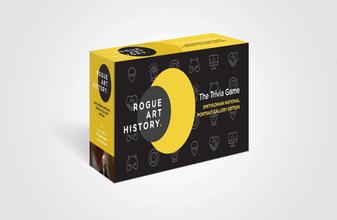More about Frank O'Hara
- All
- Info
- Shop

Contributor
A picture is worth a thousand words, or in Alice Neel’s portrait of the famous poet Frank O’Hara, the picture portrays a man who has put far beyond a thousand words of poetry to the page.
Frank O’Hara is perhaps one of the most famous poets of all time, but at the time of this portrait, painted by Neel in 1960, he had just been named the curator of New York’s Museum of Modern Art at the tender age of 35. Meanwhile, Neel, talented but largely unknown, painted his portrait twice, this painting being the first, and Frank O’Hara No 2 the second. Her portraits began to accumulate fame, and more and more popular figures in the art world asked her to paint them. Interestingly enough, her realistic style was not "in" at the time, the time being one dominated by the abstract expressionism of The New York School. Even Frank O’Hara himself is considered to be a leading figure of the New York School.
Neel’s portraits became famous for their two dimensionality and awkward, almost painful-looking poses. Neel painted many portraits throughout her career, including one of Andy Warhol, Marisol Escobar, and John Perreault, among many others. She had a special relationship to the portraits she painted, and she even claimed that she began to live vicariously through the people she painted. She described this feeling saying, “I get so identified when I paint them, when they go home I feel frightful...I have no self - I've gone into this other person - it's my way of overcoming the alienation.”
And sitting for Neel was about as intense as her description might make you expect. Julia Gruen, the executive director of the Keith Haring Foundation, sat for Neel in the 1970s. She described the experience saying, “Alice looked very benign, like a nice old lady, but underneath she seemed to be made of steel. In the end, I found the portrait to be a little scary, far too revealing.”
Frank O’Hara was a poet of The New York School, linking him to painters like Jackson Pollock, Lee Krasner, and Willem de Kooning. O’Hara famously wrote his poetry while on his lunch breaks from work. He led a private life and wrote primarily about day-to-day things in an emotional way (often described as similar to a diary entry) that no poet had written before him.
Sources
- "Alice Neel, Painted Truths." Financial Times, July 10, 2010, 19. Academic OneFile. http://link.galegroup.com.libproxy.newschool.edu/apps/doc/A231070283/AO….
- Als, Hilton. "At the Museums Alice Neel's Eye." The New Yorker. June 20, 2017. Accessed November 29, 2018. https://www.newyorker.com/magazine/2000/07/03/at-the-museums-alice-neel….
- "Frank O'Hara." From the Collection: Pocahontas. Accessed November 29, 2018. https://npg.si.edu/object/npg_NPG.96.128.
- Paglia, Michael. 2001. "Woman on the Edge: The Alice Neel Retrospective at the DAM is really Something Else." Westword, Oct 18. https://login.libproxy.newschool.edu/login?url=https://search-proquest-…
- “Top Picks: Alice Neel's penetrating eye” Wall Street Journal, Aug 15, 2018. https://login.libproxy.newschool.edu/login?url=https://search-proquest-….














Looks like a Gauguin self portrait (https://www.sartle.com/artwork/self-portrait-with-portrait-of-emile-ber…). Five stars!